Fact Sheet FS1303
With the plethora of apple varieties on the market, it can be challenging for an experienced grower looking to diversify their crops or aspiring farmers looking to establish a new orchard to choose which ones to purchase. This factsheet outlines a number of classic varieties and new releases that have proven to be good performers in New Jersey. Varieties/cultivars are organized by ripening time to ensure ripe fruit for harvesting throughout the season, as well as adequate cross-pollination. Cultivars that ripen at the same time tend to be good pollinators of each other. However, it is strongly recommended that growers establish their orchard with a secondary source of pollen (i.e., crabapple) to help ensure an annual crop.
Additional considerations when sourcing plant material for a commercial orchard:
Note: A number of the cultivars outlined in this factsheet are denoted with (*). These varieties are particularly well-adapted to New Jersey as they were selected through the collaborative breeding efforts of the Purdue University, Rutgers University, and University of Illinois Disease Resistant Apple Breeding Program (PRI breeding program). The breeding efforts made by this program were initiated to develop cultivars exhibiting apple scab resistance. A total of 44 selections were released for advanced testing, a number of which (several included in this factsheet) were patented.
Harvest Late August
Secondary Pollinizer: Chestnut crabapple
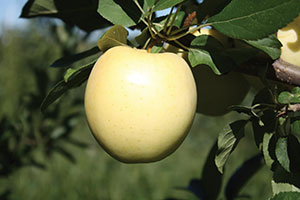
Figure 1. An early ripening Blondee® apple, still on the tree.
Blondee®
A yellow apple with very sweet flavor and a hint of acid. It has a crispy texture and bright white flesh shows very little bruising after packing. Blondee® will stay crisp even after months in cold storage. However, it is also a good option for U-pick orchards, as it will hang on the tree for 2–3 weeks. Blondee® is appealing to growers for its consistently annual bearing.
Sansa ('Gala' x 'Akane')
The Gala parentage of this apple is expressed in its very sweet flavor profile and yellow flesh, however it has a touch more acidity than Gala. The tree is tolerant and resistant to a number of different diseases, it expresses tolerance to apple scab and fire blight, and resistance to powdery mildew and cedar apple rust. Sansa has been shown to be particularly vulnerable to viral infection, thus it is exceedingly important for growers to be insistent on virus-free Sansa trees from the nursery.
Zestar!™ ('State Fair' x advanced seedling)
This is a juicy apple with good sugar and acid balance. The skin of Zestar!™ has a yellow green background with a red blush and slightly soft texture with cream to white flesh color. Its soft texture results in a short shelf life, making it a good choice for an orchard sourcing to U-pick and local markets. The trees are very vigorous growers, however there is no known disease resistance.
Harvest Early September
Secondary Pollinizer: Chestnut, Manchurian, and Snowdrift crabapple
Gala
Gala is one of the primary varieties on the world market. As such, there are a number of Gala clones available, many of which ripen at a similar time. The cultivar tends to have a very sweet aromatic profile without too much crunch and a yellow flesh color. Gala is also very susceptible to many diseases, most notably fire blight.
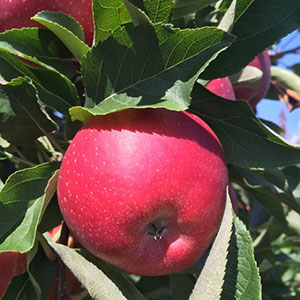
Figure 2. A deep red Buckeye Gala® apple, ready for harvest.
Buckeye Gala®
A very similar cultivar to Imperial Gala™ is reported to be 100% red over color with some slight under stripes. This color profile allows for a single pick harvest, which is ideal for wholesalers.
Ultima Gala®
Ultima Gala® is a limb mutation of Imperial Gala™ with 95–100% red color and a strong stripe. It is notable because it grows to a particularly large size (~3 inch diameter) for a Gala, which tends to be a smaller apple.
Harvest Mid–Late September
Secondary Pollinizer: Chestnut, Manchurian, and Snowdrift crabapple
Braeburn
Braeburn is more than likely a seedling of Granny Smith. Braeburn has a balanced sweet to acid flavor with aromatic, pale yellow/gold flesh, and has a bit of a crunch. This cultivar is very notable for retaining firmness a long time in storage. Braeburn can be a challenging variety to grow due to its high susceptibility to all major apple diseases in addition to post harvest disorders. However, it still maintains a vigorous growth habit.
*Crimsoncrisp™
This variety was derived from advance seedlings out of the PRI breeding program. It yields a small to medium apple with a deep red over color. The flesh of the apple is notably crisp and yellow, though somewhat hard with a very sweet and sub-acid flavor. Crimsoncrisp™ apples stay fresh in cold storage for many months. This cultivar has notable resistance to scab but is susceptible to cedar apple rust and fire blight.
Empire ('Red Delicious' x 'Macintosh')
Empire has a sweet flavor profile with pineapple and melon notes, as well as a distinct crunch and creamy white flesh. Empire does not produce notable bruising with handling and does not hold well in cold storage. The tree tends to be vigorous and puts on a consistent crop every year. Empire can be particularly susceptible to bitter rot in some years.
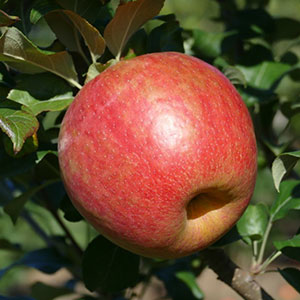
Figure 3. Standard Honeycrisp cultivar, at peak of harvest.
Honeycrisp ('Macoun' x 'Honey Gold')
Honeycrisp was introduced from the University of Minnesota breeding program. This variety grows well in the central leader system and is an annual bearer. Honeycrisp has a red over yellow/green background, creamy white flesh and has an exceptional crisp juicy sub-acid flavor. Honeycrisp is a good "direct to market" apple. The tree tends to drop fruit prematurely and has no notable disease resistance. Honeycrisp may need extra calcium supplements due to its susceptibility to corking and bitter pit.
There are a number of 'Honeycrisp' sports, a short subset is listed below:
Firestorm Honeycrisp™
This Honeycrisp strain is notable for its redder color than the standard Honeycrisp.
Royal Red Honeycrisp™
This strain colors earlier and has higher sugar than standard Honeycrisp.
*Pixie Crunch™
This cultivar was derived from advance seedlings out of the PRI breeding program. The apple is small to medium with a crispy texture, a juicy, complex, sweet/tart flavor, and yellow flesh. The fruit ripens in mid-September but hangs on the tree for a month, making it appealing to U-pick farm operations. It shows resistance to apple scab and moderate resistance to fire blight. However, it is susceptible to powdery mildew and cedar apple rust.
Summerset®
Summerset® was developed through the Midwest Apple Improvement Program. It is the seeding of a 'Honeycrisp' x 'Fuji' cross. Summerset® has large fruit with a very crisp texture and good sugar/acid balance. The tree is a vigorous producer but shows susceptibility to apple scab.
Harvest Early October
Secondary Pollinizer: Chestnut, Manchurian, and Snowdrift crabapple
Autumn Gala
A late season Gala with the same 'Gala' flavor profile, but the fruit flesh is firmer and denser. The over color is unique from that of other Galas in that it is orange/red with white/yellow flesh. The tree shows a similar vigorous growth habit (considerable yearly vegetative growth) as that of standard early season 'Gala', but unfortunately, like other Gala selections, is very susceptible to fire blight.
Daybreak Fuji™
Daybreak Fuji™ is similar to the classic 'Fuji' variety. This apple has a subdued sweet flavor profile with crisp white flesh. The fruits are very large with a pink/red blush over color. The tree is very fruitful and productive.
Freedom
This variety breed at Cornell University has tender, and cream color fleshed fruit with a sweet taste. Fruit has red stripes over a yellow background. The tree is very vigorous and spreading. This cultivar is exceptionally notable for its resistance to powdery mildew, fire blight, cedar apple rust, and apple scab with a vigorous, spreading habit. 'Freedom' has great potential as a variety of choice for a new grower and/or organic production.
Indared
Indared produces large, bright red apples with a sweet tart taste and yellow green flesh with a pink tinge. The apples maintain their flavor in long-term storage. Trees will put on annual heavy crops and have a compact growth habit. Unfortunately, they are also susceptible to fire blight.
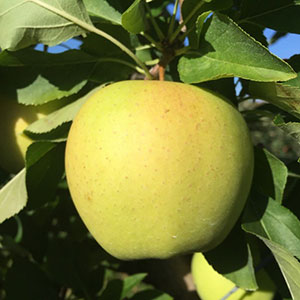
Figure 4. Gibson Golden Delicious cultivar at the peak of harvest.
Gibson Golden Delicious
Gibson Golden Delicious is a strain of 'Golden Delicious' with resistance to russeting (brown dense skin scarring). The apple has a very sweet flavor profile, is firm, has cream yellow-colored flesh and is very large. The tree is a productive one in the orchard and has a habit of spreading.
Rosalee®
Developed through the Midwest Apple Improvement Program. Rosalee® is the seedling of a 'Honeycrisp x Fuji' cross. This apple is very crisp, red/bi-color with a scarlet over color and sweet floral tones. The apple is medium sized and holds onto the tree well. It is a vigorous tree in the field but does not show any resistance to apple scab.
Harvest Mid–Late October
Secondary Pollinizer: Chestnut, Manchurian, and Snowdrift crabapple
Cameo™
Cameo™ is a classic bright red apple with a creamy back color. The flesh texture is firm and crisp with an appealing sub-acid aromatic flavor and creamy yellow color. The tree is highly precocious, it has been shown to have significant vegetative growth each season.
Ludacrisp®
Ludacrisp® was developed through the Midwest Apple Improvement Program and is an open-pollinated seedling of Honeycrisp. This apple is harvested three weeks after Golden Delicious and has a unique sweet/tart tropical flavor which has been likened to Juicy Fruit® gum. The apples are very large and particularly crispy. In trials thus far Ludacrisp® is susceptible to all major apple diseases.
Mutsu
Mutsu is a yellow apple and is the result of a cross between 'Golden Delicious' and 'Indo'. The apple is firm, white fleshed, and juicy. It is an ideal cultivar for a U-pick orchard because the apples taste best when picked fresh from the tree. The tree has a vigorous growth habit, meaning it has significant vegetative growth every year.
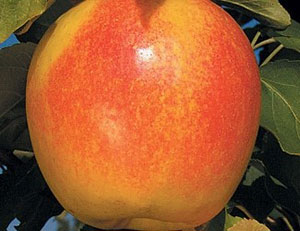
Figure 5. Strikingly colored Suncrisp™ apples at harvest.
*Suncrisp™
Suncrisp™ is an advanced breeding selection from the NJ Agricultural Experiment Station Breeding Program (['Courtland' x 'Cox Orange Pippin'] x 'Golden Delicious'). It is a golden apple with orange red blush, high sugar, high acid content, has a firm crisp texture, and cream-colored flesh. Suncrisp™ should be kept in plastic bags while in cold storage because it is prone to drying out. The trees show medium vigor and a tendency toward biennial bearing. They do not have any notable disease resistance. Some russeting does occur so it is best as a direct to market apple. The apple can be difficult to grow, because of its tendency to biennial bearing, and disease susceptibility. However, its unique flavor stands out amongst others harvested at this time.
Harvest Early-November
Secondary Pollinizer: Indian summer crabapple
*Enterprise™
Enterprise™ is a cross of two apple scab resistant seedling selections. It has a notable deep red color, is moderately acidic, and has firm and crisp yellow flesh. This annual bearing tree is vigorous, and has resistance to apple scab, cedar-apple rust, and fire blight. Enterprise™ may require extra calcium supplements due to its high susceptibility to corking and bitter pit. Enterprise™ can keep up to 6 months in regular refrigerated storage.
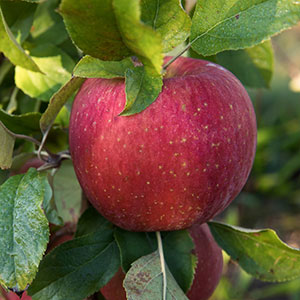
Figure 6. Deep pink Evercrisp® apple during harvest.
EverCrisp® ('Honeycrisp' x 'Fuji')
A new apple released in 2012, it was developed through the Midwest Apple Improvement Program and is noted for its excellent storage potential and sweet/juicy flavor with a crunchy texture. The tree is smaller with low to medium tree vigor, and no notable disease resistance. EverCrisp® apples resemble Fuji and have the flavor of Fuji with the texture and crispness of a Honeycrisp.
*Goldrush
Goldrush is a cross between 'Golden Delicious' and an advanced seedling selection out of the PRI breeding program. It has golden yellow-colored skin with pale yellow flesh with a complex sweet/acid flavor and a firm crisp texture. Goldrush has resistance to fire blight and apple scab, but is susceptible to mildew. This cultivar is also well adapted to a central leader system and is moderately vigorous. Unfortunately, it has tendencies to only produce a crop every other year.
Granny Smith
This very well-known apple is notable for its green skin, tart flavor, and bright white flesh. The cultivar holds well in long-term storage. The tree is very vigorous and bears heavily; however it is susceptible to apple scab and powdery mildew.
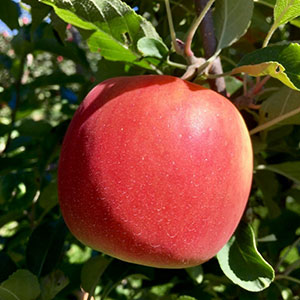
Figure 7. Cripps Pink with pink color over yellow background at harvest.
Cripps Pink
It is a cross between 'Lady Williams' and 'Golden Delicious' and is also known as the brand name 'Pink Lady'. The fruit color of this variety is an attractive pink blush over yellow background and yellow/white flesh. The tree is vigorous and produces firm fruit with an excellent sweet/acid balance. Unfortunately, this cultivar is susceptible to apple scab, powdery mildew, and fire blight.
| Harvest Interval | Variety | Suggested Secondary Pollinizer | Notable attributes | Disease Resistance |
|---|---|---|---|---|
| Late August | Blondee® | Chestnut Crabapple | Crisp texture, sweet flavor | None |
| Zestar!™ | Nice sugar acid balance | None | ||
| Sansa | Sweet flavor profile | Tolerance to apple scab and fire blight, resistance to powdery mildew and cedar apple rust | ||
| Early September | Buckeye Gala® | Chestnut, Manchurian, or Snowdrift Crabapple | Beautiful deep red skin color | None |
| Gala | Sweet aromatic flavor | None | ||
| Ultima Gala® | 100% red color skin, very large apples | None | ||
| Mid-Late September | Braeburn | Chestnut, Manchurian, or Snowdrift Crabapple | Sweet acid flavor, holds texture well in storage | None |
| Honeycrisp Includes Firestorm Honeycrisp™ And Royal Red Honeycrisp™ |
Novel crunchy texture, with a sub-acid flavor, exceedingly large fruit | None | ||
| Crimsoncrisp™ | Sweet flavor, with beautiful red skin | Apple scab | ||
| Empire | Unique flavor profile, consistently produces fruit | Moderate resistance to fire blight and cedar apple rust | ||
| Pixie Crunch™ | Ripe fruit will hold on the tree for weeks | Moderate resistance to fire blight and resistance to apple scab | ||
| Early October | Autumn Gala | Chestnut, Manchurian, or Snowdrift Crabapple | Firm texture, and sweet flavor, unique orange/red skin color | None |
| Daybreak Fuji™ | Subtle sweet flavor, consistently produces fruit | None | ||
| Gibson Golden Delicious | Fruit flavor is exceptionally sweet | None | ||
| Freedom | Sweet tart flavor | None | ||
| Rosalee® | Fruit have a beautiful Scarlet over color | None | ||
| Summerset® | Large fruit, with crisp texture | None | ||
| Indared | Sweet fruit flavor | Powdery mildew, fire blight, cedar apple rust, and apple scab | ||
| Mid-Late October | Cameo™ | Chestnut, Manchurian, or Snowdrift Crabapple | Sub-acid aromatic flavor, and firm flesh | None |
| Ludacrisp® | Flavor has been likened to Juicy Fruit® gum | None | ||
| Mutsu | Fantastic flavor when picked fresh | None | ||
| Suncrisp™ | Unique flavor profile due to exceptionally high sugar and acid levels | None | ||
| Early November | Cripps Pink | Indian Summer Crabapple | Dense flesh, with beautiful pink skin | None |
| EverCrisp® | Exceptionally excellent storage potential | None | ||
| Granny Smith | Exceptionally tart flavor | None | ||
| Enterprise™ | Moderately acidic flavor | Apple scab, cedar-apple rust and fire blight | ||
| Goldrush | Complex sweet tart flavor profile, suitable for cider | Fire blight |
References
Photo credits: Gale W.H., 2012 (Figure 1); Clements, J., 2015 (Figures 2–4 and 7); Adams County Nursery, 2018 (Figure 5); MAIA, 2018 (Figure 6).
April 2019
Copyright © 2024 Rutgers, The State University of New Jersey. All rights reserved.
For more information: njaes.rutgers.edu.
Cooperating Agencies: Rutgers, The State University of New Jersey, U.S. Department of Agriculture, and Boards of County Commissioners. Rutgers Cooperative Extension, a unit of the Rutgers New Jersey Agricultural Experiment Station, is an equal opportunity program provider and employer.

